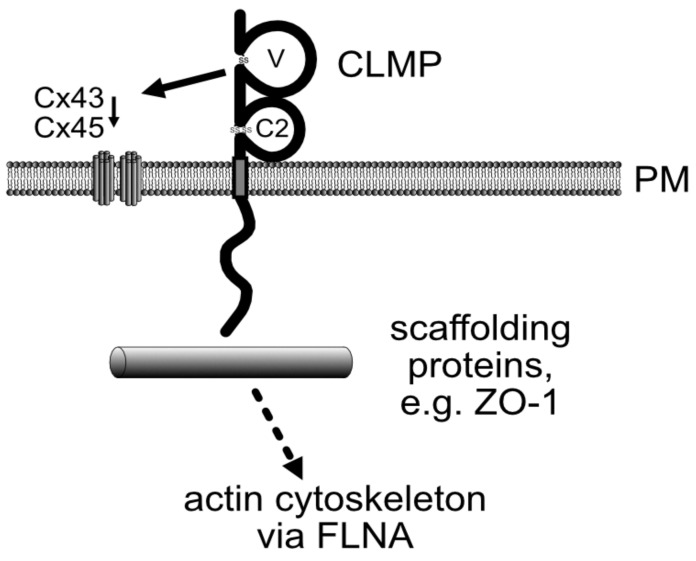Recombinant Human ASAM protein(Met1-Met233), His-tagged
| Cat.No. : | ASAM-587H |
| Product Overview : | Recombinant Human ASAM (NP_079045.1)(Met 1-Met 233) was expressed in HEK293 with a C-terminal polyhistidine tag. |
| Availability | April 19, 2025 |
| Unit | |
| Price | |
| Qty |
- Specification
- Gene Information
- Related Products
- Case Study
- Application
- Download
| Species : | Human |
| Source : | HEK293 |
| Tag : | His |
| Protein Length : | Met1-Met233 |
| Form : | Lyophilized from sterile PBS, pH 7.4. Normally 5 % - 8 % trehalose, mannitol and 0.01% Tween80 are added as protectants before lyophilization. |
| Molecular Mass : | The secreted recombinant human ASAM comprises 227 amino acids and predicts a molecular mass of 25.8 kDa. It migrates as an approximately 32-35 kDa band in SDS-PAGE under reducing conditions. |
| Endotoxin : | < 1.0 EU per μg of the protein as determined by the LAL method. |
| Purity : | > 97 % as determined by SDS-PAGE |
| Storage : | Samples are stable for up to twelve months from date of receipt at -20°C to -80°C. Store it under sterile conditions at -20°C to -80°C. It is recommended that the protein be aliquoted for optimal storage. Avoid repeated freeze-thaw cycles. |
| Reconstitution : | It is recommended that sterile water be added to the vial to prepare a stock solution of 0.2 ug/ul. Centrifuge the vial at 4°C before opening to recover the entire contents. |
| ◆ Recombinant Proteins | ||
| ASAM-4022H | Recombinant Human ASAM protein, His-tagged | +Inquiry |
| ASAM-587H | Recombinant Human ASAM protein(Met1-Met233), His-tagged | +Inquiry |
Case 1: Langhorst H, et al. Dis Model Mech. 2018
Researchers are investigating CLMP, a protein linked to congenital short-bowel syndrome, a severe condition with high mortality. Using a mouse model lacking CLMP, they found that despite normal mRNA levels for certain proteins, there was a major drop in Connexin43 and Connexin45 in intestinal and ureter smooth muscle cells. This caused disrupted calcium signaling and poor communication between cells, leading to uncoordinated movements of the intestine and ureter. As a result, transport issues with chyme and urine occurred, significantly impacting survival and causing severe kidney problems. Despite these issues, neurotransmission and the ability of muscles to contract remained unchanged. There were no physical blockages or major tissue changes observed, though some increase in muscle layer thickness was noted. Unlike in humans, the condition didn't shorten the intestine's length but led to gut twisting.

Fig1. Examples of the amplitude of longitudinal movements of wild-type and CLMP-deficient duodenal segments are shown.

Fig2. Ultrastructure of circular smooth muscle cells in the duodenum of wild-type and CLMP-deficient mice.
Case 2: Raschperger E, et al. J Biol Chem. 2004
The CTX family, part of the immunoglobulin superfamily, includes proteins involved in cell adhesion. We've identified a new member called CLMP, made up of 373 amino acids with distinct structural domains. CLMP is found in many human and mouse tissues, mostly in epithelial cells. In lab-grown cells, it shows up at points where cells meet and aligns with tight junction proteins like ZO-1 and occludin. This points to its role in helping cells stick together and maintaining barrier functions in tissues.

Fig1. Multiple tissue Northern blot analyses of human CLMP mRNA expression.

Fig2. Cell lysates from non-transfected (lanes 1 and 4), hCLMP (lanes 2 and 5), or mCLMP (lanes 3 and 6) transfected 293 cells were separated by SDS-PAGE.
Recombinant Human ASAM (rhASAM) is part of the CTX family and the immunoglobulin superfamily and plays an important role in both research and industry. It's key in cell sticking and has links to fat cell development and obesity.
In research, rhASAM is used to study how cells stick together and its possible role in conditions like obesity. It's also important for normal gut development, making it useful in gastrointestinal studies. rhASAM helps develop antibodies for tests like flow cytometry and ELISA, which are vital for medical research diagnostics.
In industry, rhASAM's properties are used to create treatments and tests. Its role in fat cell growth makes it a target for obesity drugs. Its part in cell sticking suggests it could help develop cancer treatments. Producing rhASAM ensures consistent reagents for research and diagnostic tests, crucial for reliable scientific and medical use.

Fig1. Scheme showing hypothetical molecular functions of CLMP in smooth muscle cells of the murine intestine. (Fritz G Rathjen, 2023)
Not For Human Consumption!
Inquiry
- Reviews
- Q&As
Ask a Question for All ASAM Products
Required fields are marked with *
My Review for All ASAM Products
Required fields are marked with *
Inquiry Basket


